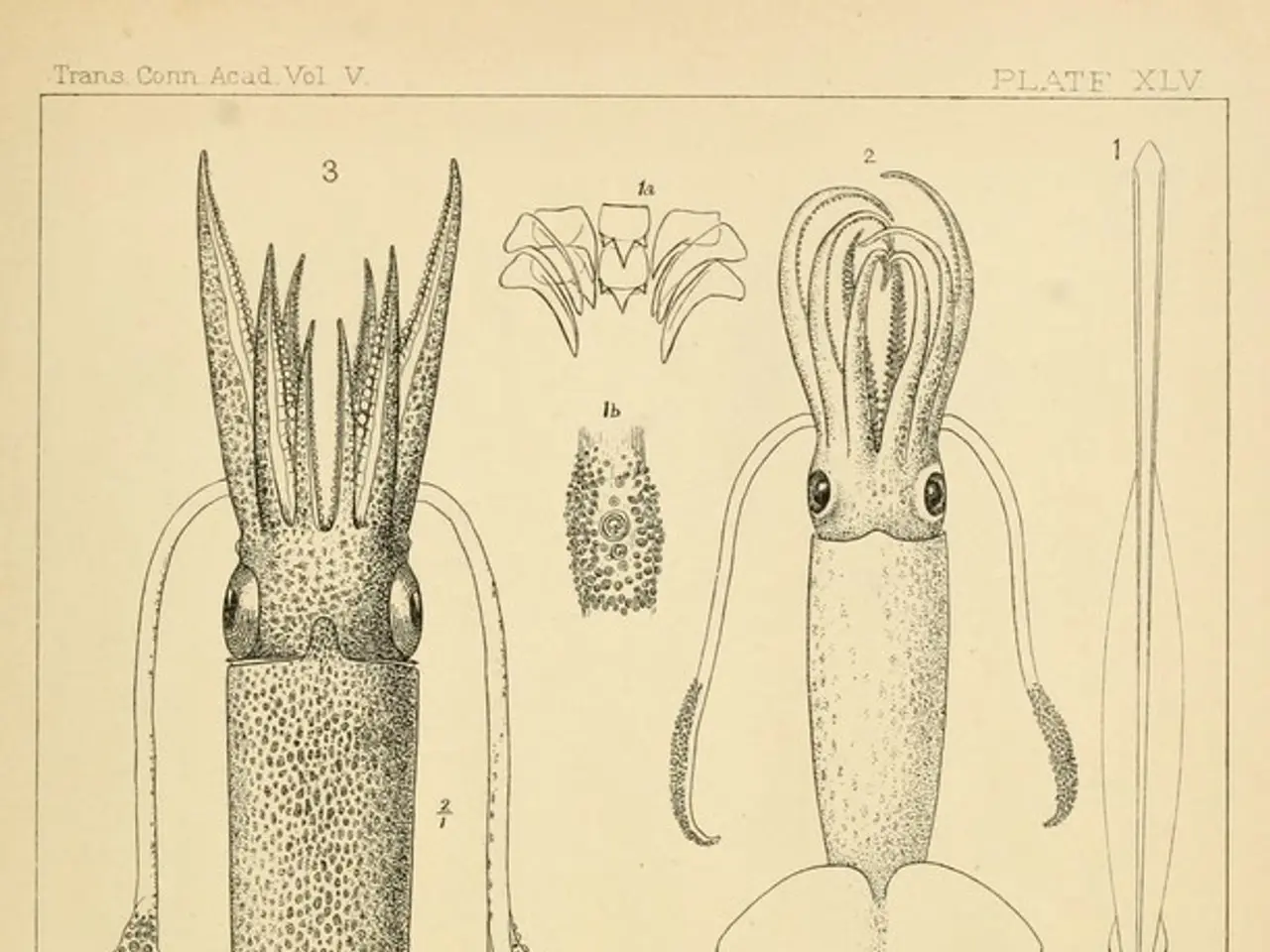Ancient reptile, dating back 247 million years, exhibited peculiar skin protrusions
The Stuttgart Natural History Museum has announced a groundbreaking discovery – a 247-million-year-old reptile species named *Mirasaura grauvogeli* that boasts a dorsal crest composed of dense, individual skin appendages with a feather-like contour. This prehistoric creature, discovered by Louis Grauvogel and now part of the museum's collection, has sparked a reevaluation of the evolutionary timeline and diversity of skin appendages in reptiles.
The crest contains individual, densely overlapping appendages with a narrow central ridge, giving them a feather-like shape. These appendages, however, are not true feathers, as they lack the branching structures seen in birds' feathers. Instead, they represent a unique evolutionary path of skin appendage development.
The presence of such complex skin growths in Mirasaura, a non-avian reptile from the Triassic, challenges the traditional view that complex integumentary structures like feathers evolved only in the lineage of birds and their closest relatives (dinosaurs, pterosaurs). The discovery implies that genetic mechanisms underlying complex skin appendages evolved much earlier in the reptile lineage, possibly dating back to early amniotes – the common ancestors of mammals, birds, and reptiles.
The unique skin growths on Mirasaura extend the history of feather-like structures well before the emergence of birds. These structures were likely used for species display communication, suggesting an evolutionary role in social or sexual signalling.
The skull of Mirasaura shows bird-like features, including a narrow toothless snout and forward-facing eyes, hinting at specialized sensory adaptation. The spine of the discovered species is described as bizarre due to the skin growths.
The international team leading the discovery is led by Stephan Spiekman from the State Museum of Natural History Stuttgart. The findings were published in the journal "Nature". The reptile will be exhibited in Stuttgart from October.
Rainer Schoch, head of the paleontological department of the Stuttgart museum, states that Mirasaura grauvogeli shows the diversity of evolution. The discovery underscores the enormous potential of evolution, as it demonstrates that complex skin structures evolved much earlier and more diversely than previously thought.
In summary, *Mirasaura grauvogeli* exhibited complex feather-like skin growths on its back, reflecting an early and independent evolutionary origin of such structures in reptiles 247 million years ago, far predating birds. This finding broadens our understanding of the evolution of integumentary structures beyond birds and mammals to include diverse Triassic reptiles.
The feather-like skin growths on Mirasaura suggest an evolutionary role in social or sexual signalling within the health-and-wellness aspect of species communication. Additionally, the discovery challenges the traditional view of complex integumentary structures like feathers evolving only in the lineage of birds and their relatives, indicating a unique evolutionary path of skin appendage development in science, possibly dating back to the early amniotes.




